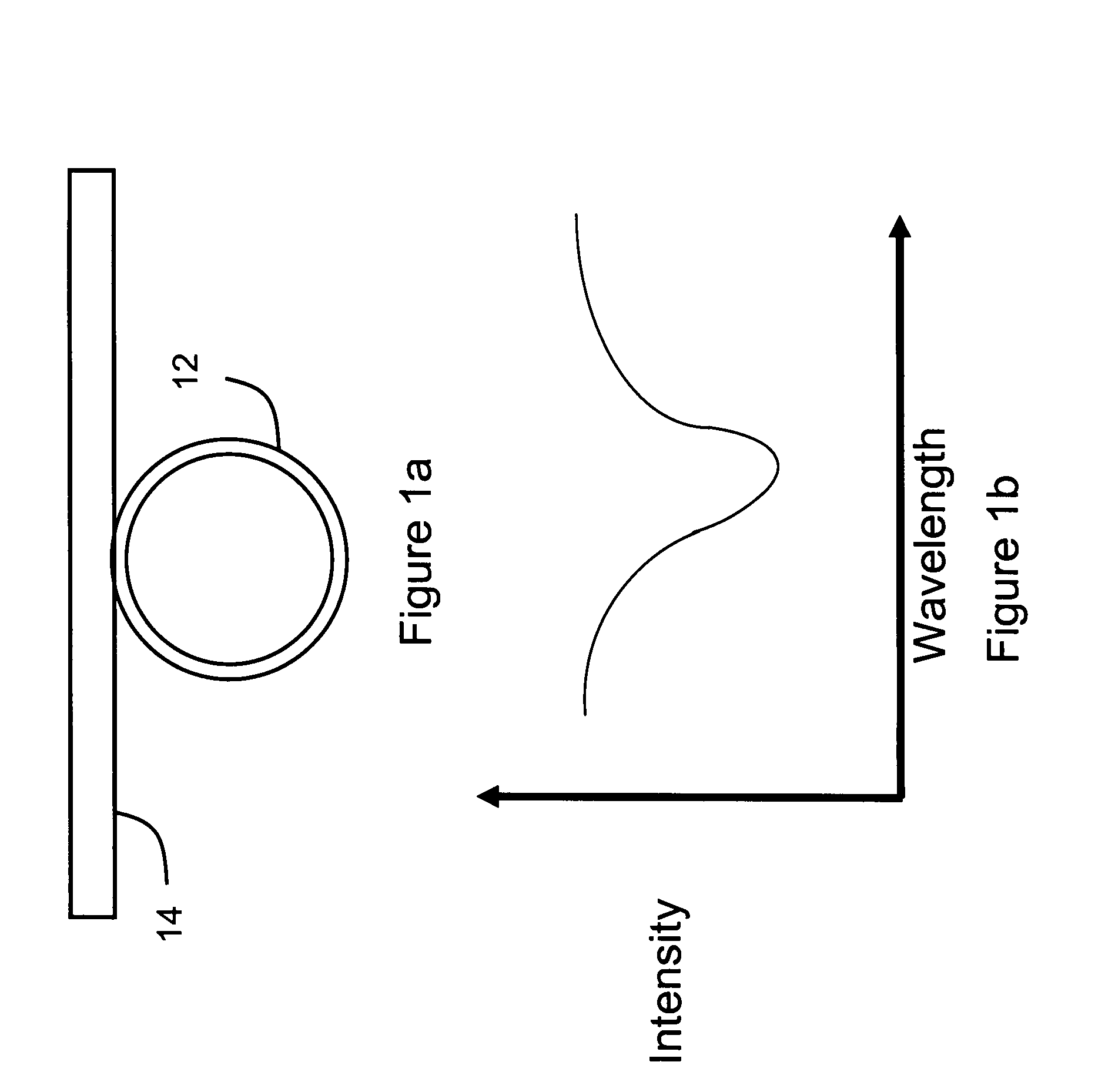Integrated optical resonator device for measuring chemical and biological analyte concentrations
- Summary
- Abstract
- Description
- Claims
- Application Information
AI Technical Summary
Benefits of technology
Problems solved by technology
Method used
Image
Examples
Embodiment Construction
[0023]The current invention utilizes micro-ring resonators to provide real time analysis of trace analytes. A typical micro-ring usually has resolution power of about 7,000˜14,000. The sensing dynamic range of a typical micro-ring resonator, as defined by the free spectrum range, is about 4 nm. As known to those skilled in the art, micro-ring resonators operate based on wave-guiding phenomena specified by boundary conditions. Propagation of light through narrow waveguides generates an evanescent field, a local region of light ‘leakage’, around the surface of the waveguide that extends a distance of 100-300 nm at near infrared wave length. The intensity of the evanescent field decays exponentially as the distance from the surface increases. When the waveguides and micro-rings are precisely aligned and positioned, either vertically or laterally, coupling of their evanescent fields can be achieved. This facilitates certain wavelengths (resonance wavelengths) of light passing through th...
PUM
 Login to View More
Login to View More Abstract
Description
Claims
Application Information
 Login to View More
Login to View More - R&D
- Intellectual Property
- Life Sciences
- Materials
- Tech Scout
- Unparalleled Data Quality
- Higher Quality Content
- 60% Fewer Hallucinations
Browse by: Latest US Patents, China's latest patents, Technical Efficacy Thesaurus, Application Domain, Technology Topic, Popular Technical Reports.
© 2025 PatSnap. All rights reserved.Legal|Privacy policy|Modern Slavery Act Transparency Statement|Sitemap|About US| Contact US: help@patsnap.com



